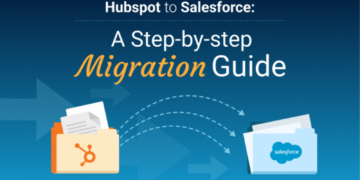
It is difficult to imagine the modern business environment without integrated cloud computing. Choosing the best cloud computing architecture is essential for a company’s success. In the contemporary world, it’s imperative to thoroughly review the features of private, public, and hybrid clouds. These three models work together to create a hybrid multi-cloud approach rather than competing with one another. A reliable cloud consulting company can help you build a robust strategy for choosing the cloud model. With this strategy, services from several cloud providers are integrated while utilizing a variety of computing environments, such as edge computing, private clouds, public clouds, and on-premises configurations. This blog will help you understand the difference between the cloud models and the right one for your business.
What are the different types of Clouds?
Public Cloud
This is the most prominent cloud solution available today. On a public cloud, the service providers enable enterprises to access a variety of services via the Internet, including computing power, marketing apps, data storage, networking components, and so on.
This multi-tenant approach allows you to share resources with other firms while keeping your data and workloads separate in a secure virtual area. A public cloud does not imply that anyone can simply log in; it is far more accessible than other types.
The public cloud is defined as computing services provided by third-party providers over the public Internet, which are accessible to anybody who wishes to use or purchase them. They can be free or offered on demand, allowing consumers to pay only for the CPU cycles, storage, or bandwidth that they use.
Pros
- Increased Agility
Public clouds offer greater agility than traditional on-premise systems. Businesses can swiftly and cost-effectively deploy new applications and services using a public cloud. This enables them to respond rapidly to changing business needs and capitalize on emerging technology without investing in new infrastructure or hiring more people.
- Cost Savings
One of the primary advantages of the public cloud is cost. Public clouds are often less expensive than traditional on-premises solutions because organizations just pay for the resources they utilize. This means organizations can scale up or down based on their requirements without investing in costly hardware or software licenses. Furthermore, public clouds frequently provide discounts for long-term contracts.
- Improved Scalability
Public clouds provide better scalability than conventional on-premise options. Businesses can easily add or remove resources as needed using a public cloud, eliminating the need to buy extra hardware or software licenses. This guarantees that companies always have enough resources accessible when needed and makes it simple to modify their IT infrastructure in response to shifting business needs.
Cons
- Security
Security is one of the main drawbacks of public cloud computing. Since data stored in the cloud can be accessed from anywhere globally, it may be susceptible to cyberattacks. Furthermore, hostile actors might be able to access sensitive data since cloud providers cannot control who visits their systems. Organizations should use robust authentication procedures and encrypt their data before storing it in the cloud to reduce this risk.
- Compliance
Adhering to industry rules and guidelines is a further constraint on public cloud computing. When keeping data on the cloud, businesses need to ensure they comply with all relevant laws and regulations. This may entail ensuring that financial data is maintained following PCI DSS requirements or that personal data is safeguarded per GDPR. Organizations that violate these restrictions may be subject to severe fines or other sanctions.
Private Cloud
A private cloud is also known as an internal or corporate cloud. The “private cloud infrastructure” refers to a specialized service for a single organization that does not require you to share computing resources with others. Data centers and servers are often placed on-site and remotely controlled by third-party suppliers.
If your business has sensitive data compliance rules or excellent data security, the private cloud is the ideal solution. It allows you to access valuable computing resources via a secure private network. You can also personalize the service based on your business and security needs.
Private cloud services provide greater control and visibility into their infrastructure. It emphasizes the importance of cloud computing in corporate growth by allowing organizations to follow all requirements.
Pros
- Flexibility
Increased flexibility in terms of scaling up or down computer capacity is another benefit of private clouds. Businesses may simply modify the amount of memory, processing power, and storage space they require with a private cloud without having to buy new hardware or software. This guarantees that they are constantly operating at maximum efficiency and enables them to react swiftly to shifting company needs.
- Improved Performance
Private clouds also provide better performance because all of an organization’s resources are stored in one spot on a single system rather than several systems dispersed across different locations or networks. This enables applications and services to access data more rapidly and effectively, with no delays caused by latency or network congestion. Furthermore, private clouds allow enterprises to leverage modern technologies like artificial intelligence (AI) and machine learning (ML), which can increase overall corporate performance and efficiency.
- More Control
Organizations also have more control over their data when they use a private cloud because all resources are hosted on their servers rather than third-party providers’ servers, as with public cloud solutions such as Amazon Web Services (AWS). This offers consumers complete control over who has access to their data and how it is used or shared with third parties like vendors or partners.
Cons
- Cost
A major limitation of private clouds is the cost. Private clouds necessitate substantial initial hardware and software investments, as well as continuous maintenance and support costs. These expenses can quickly accumulate over time, making it difficult for organizations to stay within budget when utilizing a private cloud service.
- Scalability
Private clouds have restricted scalability when compared to public clouds. Businesses may easily scale up or down with a public cloud based on their needs, but this is not always achievable with a private cloud due to the hardware and software requirements required to keep the system running. This might make it difficult for organizations that face unexpected increases in demand or require additional resources on short notice.
Hybrid Cloud
A hybrid cloud is a mixed computing system in which applications use a combination of computation, storage, and services from several environments, including public and private clouds, as well as on-premises data centers or “edge” locations.
The hybrid cloud architecture is the ideal option if you want the benefits of both public and private clouds. It is a computing solution that connects the power of the public cloud to an on-premises data center, also known as the private cloud. This allows the two infrastructures to share applications and data as needed.
For example, the hybrid cloud enables you to conduct less sensitive, transitory workloads like testing and email marketing on the public system while managing confidential duties like financial reports on the private system. The major goal is to have the ability to migrate workloads to the cloud as needed and select the optimal cloud provider for each task.
Pros
- High Availability
A hybrid cloud also provides high availability for applications and services by allowing businesses to distribute their workloads across various locations, reducing downtime due to local outages or calamities like fires or floods. Furthermore, by integrating numerous providers, businesses may ensure that their applications are always accessible, even if one provider experiences an outage or other problem.
- Easy Disaster Recovery
Utilizing both public and private clouds allows organizations to more easily establish disaster recovery plans since they have access to off-site backup solutions from public cloud vendors like Microsoft Azure and Amazon Web Services (AWS) as well as on-premise resources. This guarantees that essential programs and services continue to function even in the case of a cyberattack or other emergency, such as a natural disaster.
- Cost Savings
Utilizing both public and private clouds allows organizations to establish disaster recovery plans. They have access to off-site backup solutions from public cloud vendors like Microsoft Azure and Amazon Web Services (AWS) and on-premise resources. This guarantees that essential programs and services continue to function even in the case of a cyberattack or other emergency, such as a natural disaster.
Cons
- Complexity
Complexity is also another drawback of hybrid cloud computing. Managing one can be challenging because a hybrid cloud has both on-premise and off-premise components. To ensure that their hybrid cloud is operating correctly, businesses need to be able to manage numerous vendors, technologies, and environments efficiently. To prevent any possible problems, organizations also need to ensure that their off-premise and on-premise components work well together.
- Vendor Lock-Ins
Some vendors may need an organization to employ specific hardware or software solutions for their hybrid cloud solution to function correctly, resulting in vendor lock-in situations in which the firm becomes reliant on a single vendor’s products or services. This can limit an organization’s capacity to switch vendors if they are dissatisfied with the service they are receiving or find a better choice elsewhere due to the cost of moving data from one vendor’s platform to another.
Conclusion
For businesses looking to utilize cloud computing fully, it is imperative to comprehend the many kinds of cloud models. Companies must ensure that their cloud plans align with industry best practices, regulatory standards, and organizational objectives, regardless of whether they embrace the security, agility, and versatility of hybrid deployments or the agility of private clouds. Organizations can promote innovation, reduce expenses, and maintain a competitive edge in the current market by utilizing the appropriate combination of cloud technologies and service models.
























































